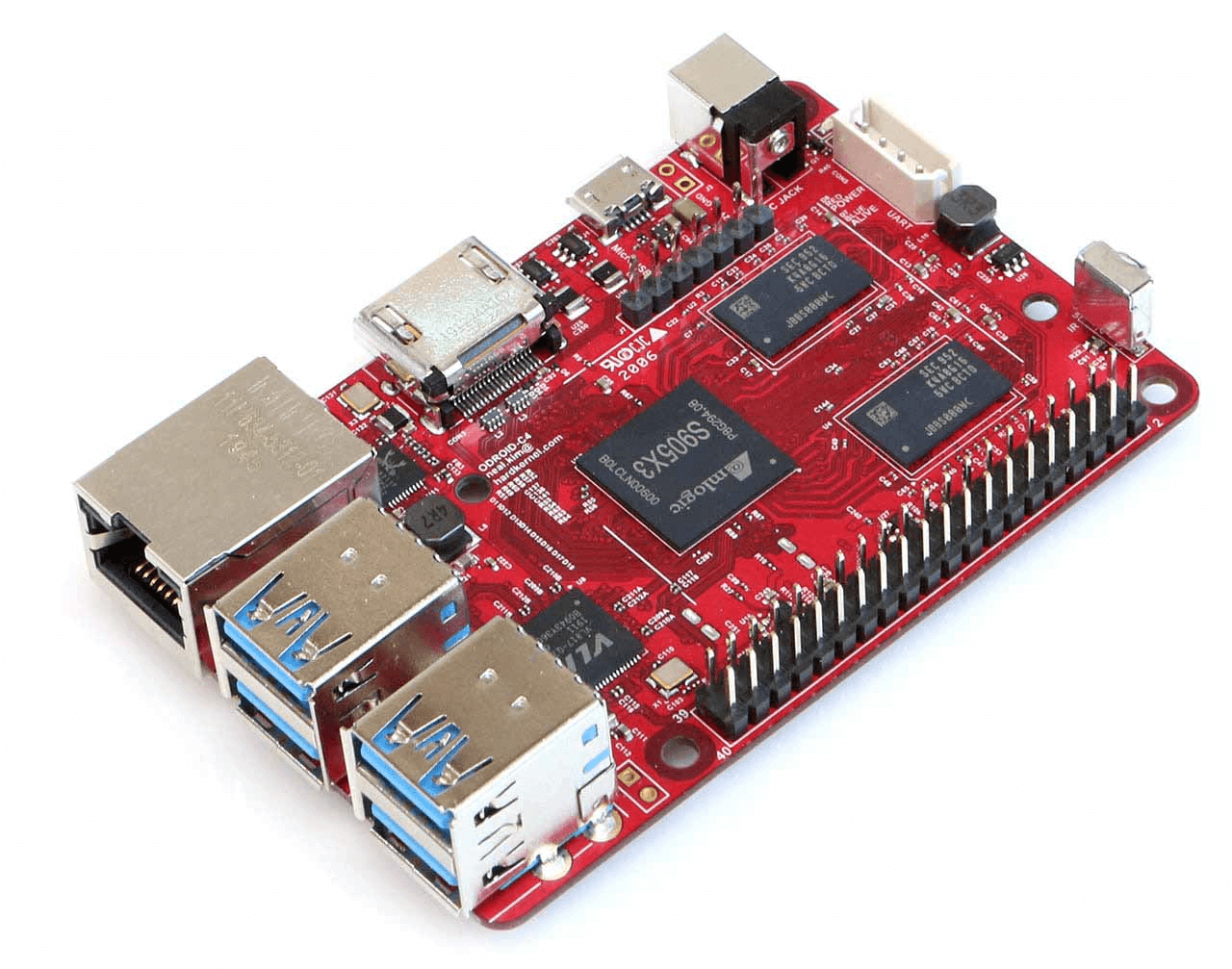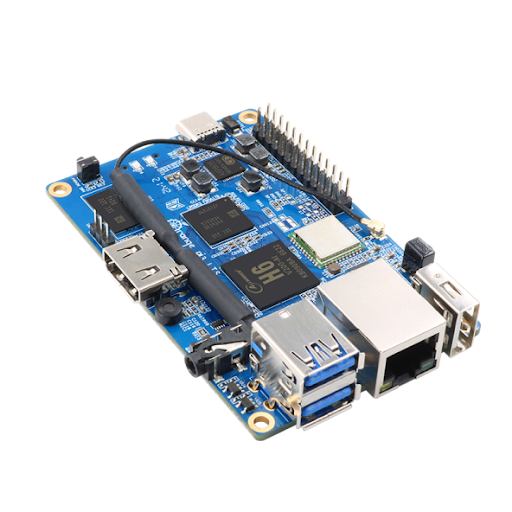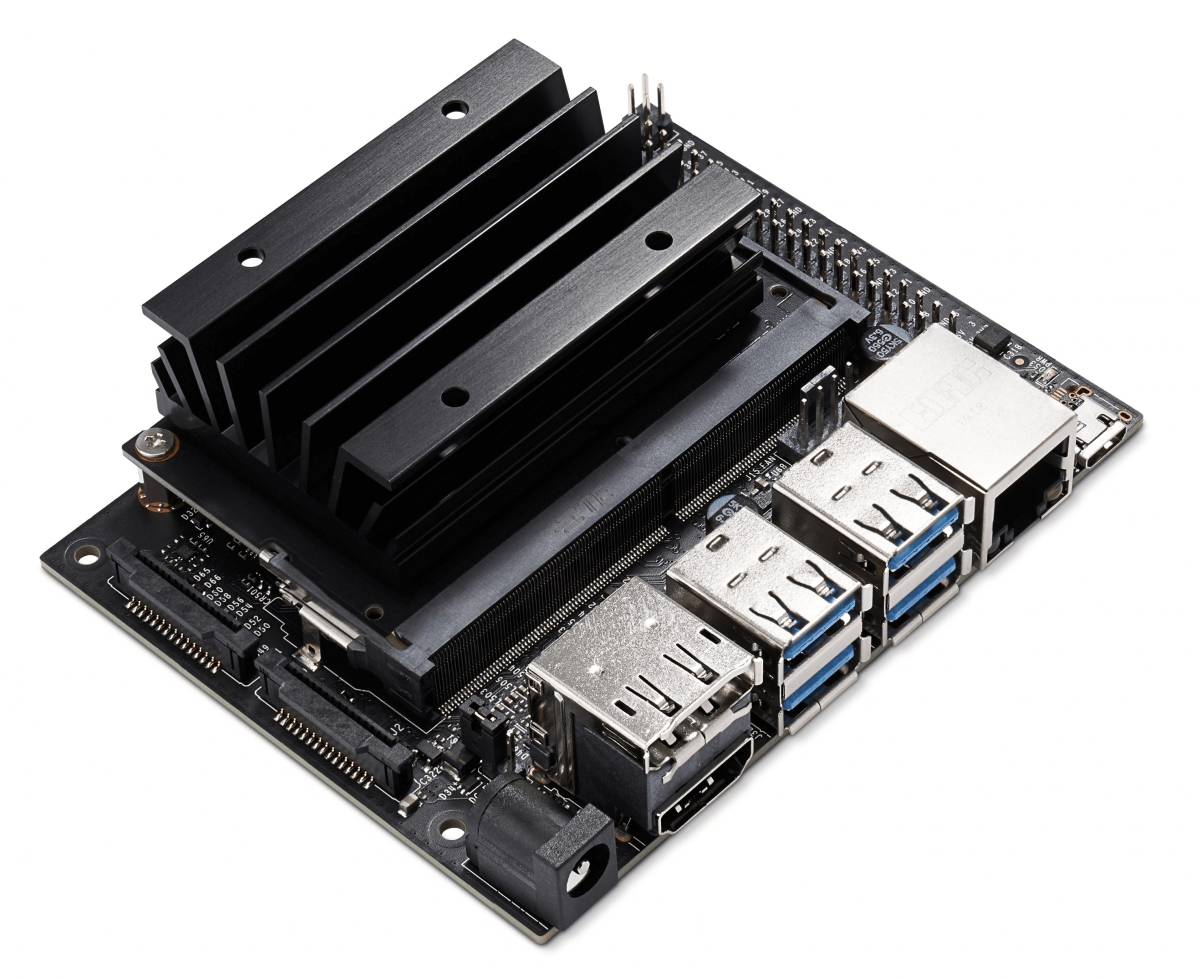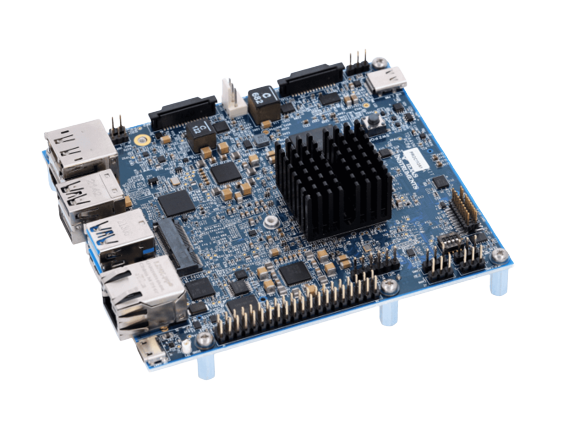Installation Guide
viam-server is the binary built from Robot Development Kit that contains and manages communications between all Viam’s built-in hardware drivers (components) and software services, connects your machine to the cloud, manages machine configuration, and manages dependencies including modules.
To use Viam software with your machine, install and run viam-server on the single-board computer (SBC) or other computer that will run your machine and is connected to your hardware.
Installing on a laptop or desktop computer is useful if you don’t have an SBC available, or if you want to run a Viam service with your machine that requires more computing resources than are otherwise available on an SBC.
For an overview of the Viam software platform, see Viam in 3 minutes.
Compatibility
viam-server supports:
- Linux 64-bit operating systems running on the
aarch64orx86_64architectures - Windows Subsystem for Linux (WSL)
- macOS
Windows Support Notice
You can install viam-server on Windows Subsystem for Linux (WSL) to test your code or machine configuration.
However, WSL itself does not currently support exposing many types of Windows hardware to the embedded Linux kernel in WSL.
This means that some hardware, such as a USB webcam connected to your Windows computer, may not be available to viam-server when run in WSL, even though it is fully supported for native Linux systems.
Although you cannot access all hardware if you run viam-server on your personal computer with WSL, you can run code to control a machine on your personal computer with WSL if you install viam-server on a single-board computer running Linux.
Prepare your board
If you are using one of the following boards, click on the card to follow the guide for that board:
Viam also provides a lightweight version of viam-server which can run on resource-limited embedded systems that cannot run the fully-featured Robot Development Kit (RDK).
If you are using a microcontroller, prepare your board using the following guide:
Other SBCs such as the RockPi S and Orange Pi Zero 2 can run Viam with an experimental periph.io based modular component.
Install viam-server
If you have a compatible operating system, follow along with the steps outlined below or with the video beneath it to install viam-server:
viam-server is distributed for Linux as an AppImage.
The AppImage is a single, self-contained binary that runs on 64-bit Linux systems running the aarch64 or x86_64 architectures, with no need to install any dependencies (except for FUSE, which is required by the AppImage format).
To install viam-server on a Linux computer:
Go to the Viam app. Create an account if you haven’t already.
Add a new machine by providing a name in the New machine field and clicking Add machine:

Navigate to the CONFIGURE tab and find your machine’s card. An alert will be present directing you to Set up your machine part:
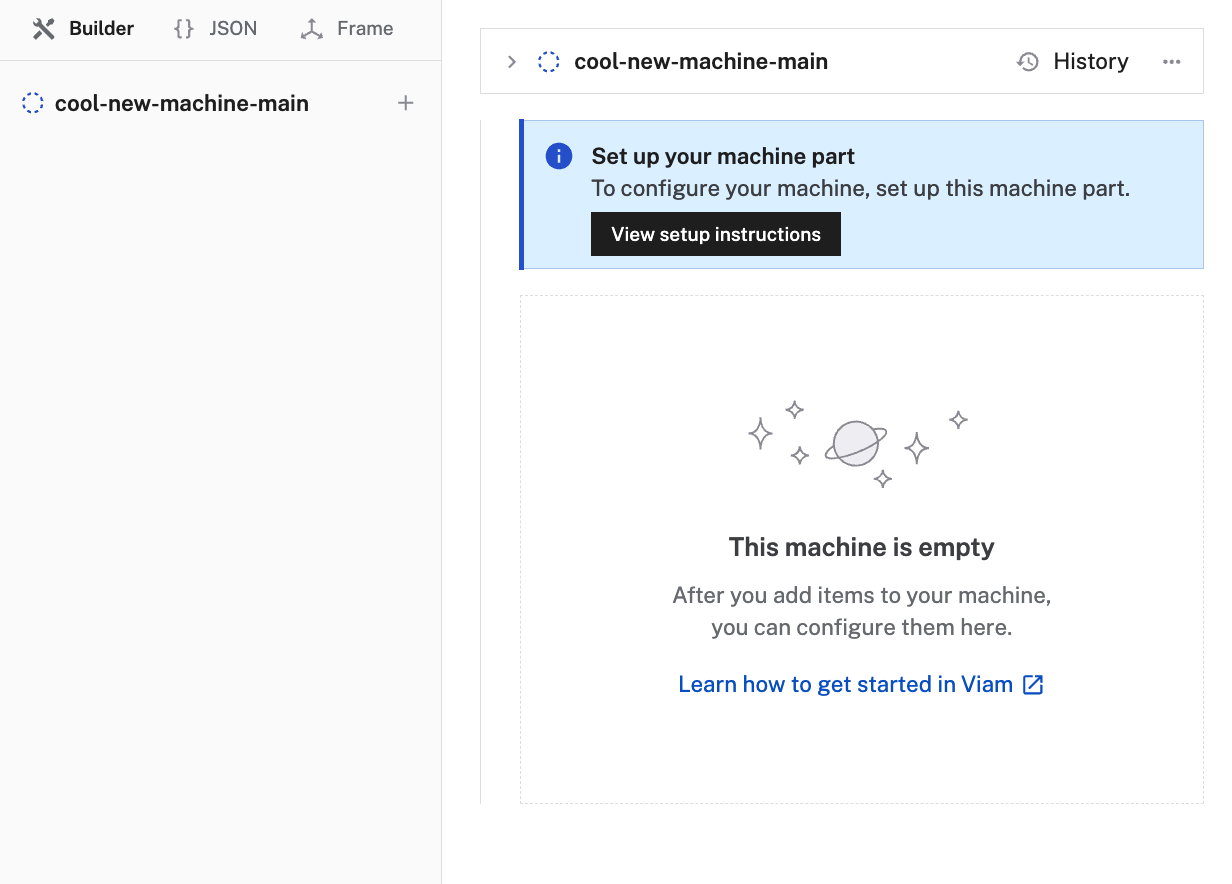
Click View setup instructions to open the setup instructions.
Select the appropriate architecture for your machine: Linux (Aarch64), Linux (x86_64), or Armv7l. On most Linux operating systems, you can run
uname -mto confirm your computer’s architecture.Follow the steps shown to install
viam-serveron your Linux computer.Once you have followed the steps on the setup instructions,
viam-serveris installed and running. Wait for confirmation that your computer has successfully connected.
By default, viam-server will start automatically when your system boots, but you can change this behavior if desired.
viam-server is available for macOS users through Homebrew, and supports both Intel and Apple Silicon macOS computers.
To install viam-server on a macOS computer:
If not installed already, install Homebrew.
Go to the Viam app. Create an account if you haven’t already.
Add a new machine by providing a name in the New machine field and clicking Add machine:

Navigate to the CONFIGURE tab and find your machine’s card. An alert will be present directing you to Set up your machine part:

Click View setup instructions to open the setup instructions.
Select Mac as your system’s OS and RDK as your RDK type.
Follow the steps shown to install
viam-serveron your macOS computer.Once you have followed the steps on the setup instructions,
viam-serveris installed and running. Wait for confirmation that your computer has successfully connected.
Go to the Viam app. Create an account if you haven’t already.
Add a new machine by providing a name in the New machine field and clicking Add machine:

Navigate to the CONFIGURE tab and find your machine’s card. An alert will be present directing you to Set up your machine part:

Click View setup instructions to open the setup instructions:
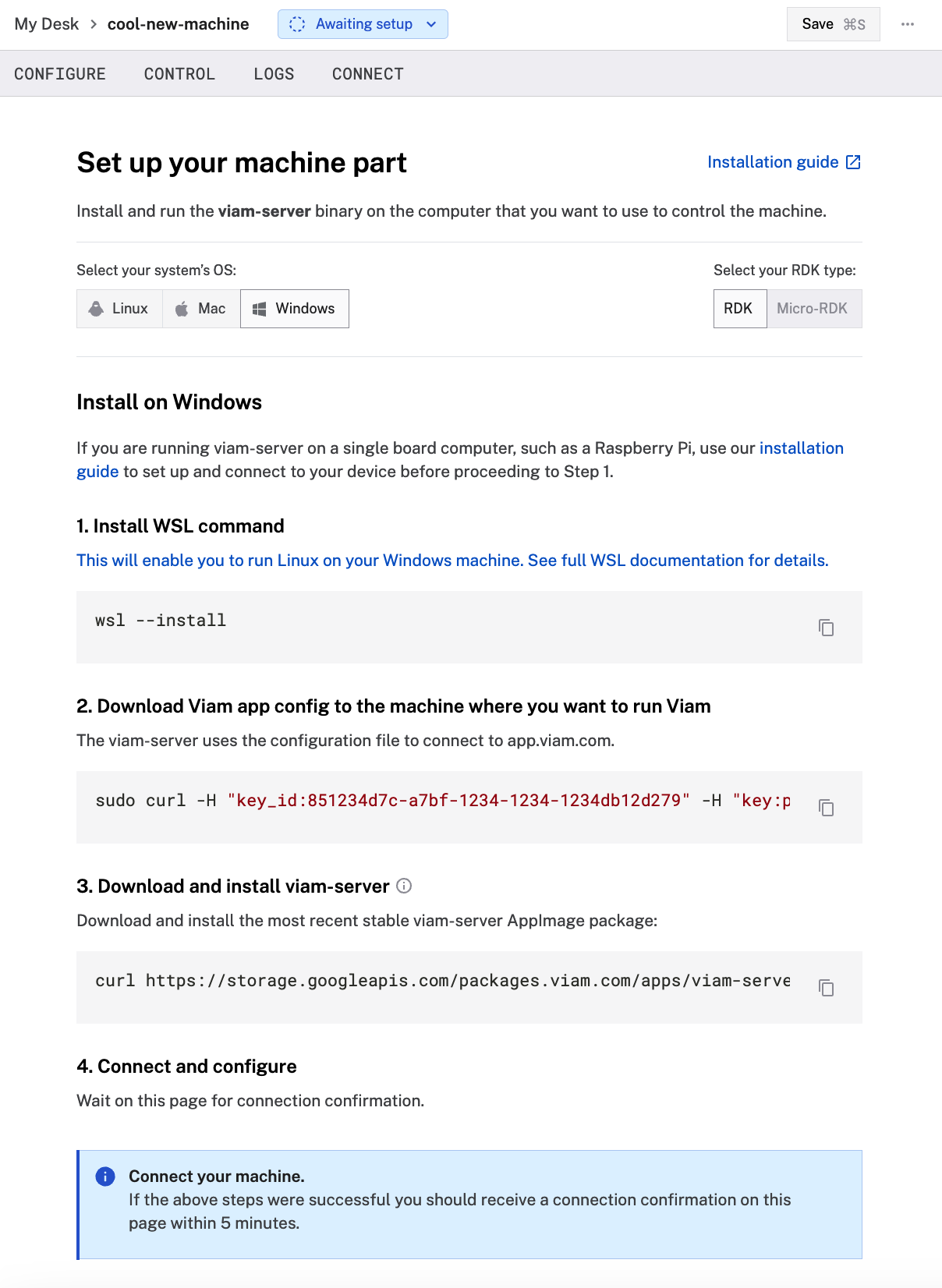
Select Windows as your system’s OS and RDK as your RDK type.
Follow the steps shown to install
viam-serveron your Windows machine.Once you have followed the steps on the setup instructions,
viam-serveris installed and running. Wait for confirmation that your computer has successfully connected.
Manage viam-server
To learn how to run, update, or uninstall viam-server, see Manage viam-server.
Next steps
Was this page helpful?
Glad to hear it! If you have any other feedback please let us know:
We're sorry about that. To help us improve, please tell us what we can do better:
Thank you!

